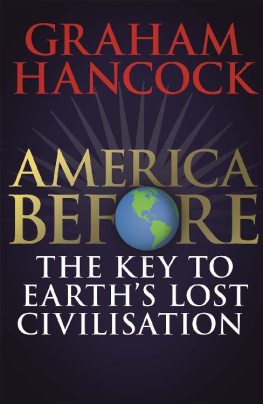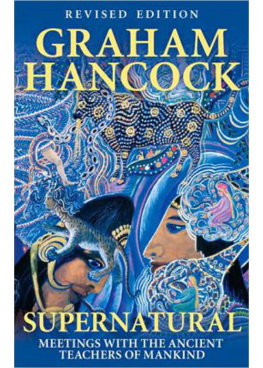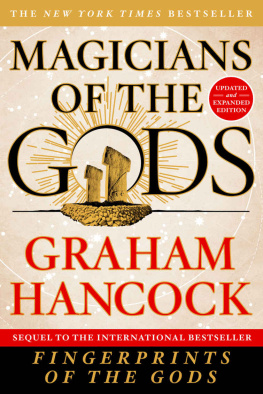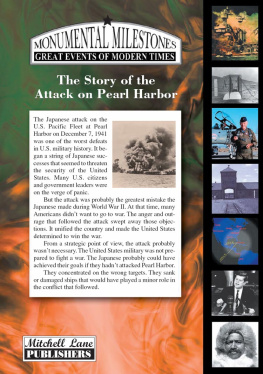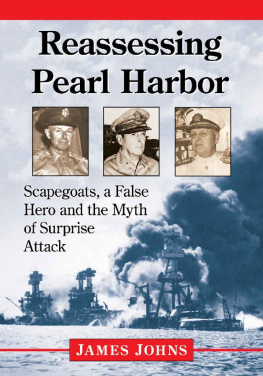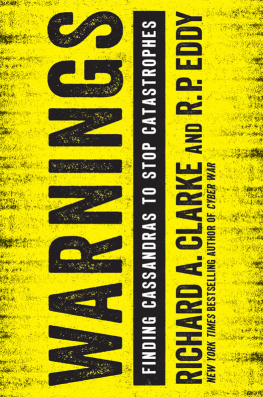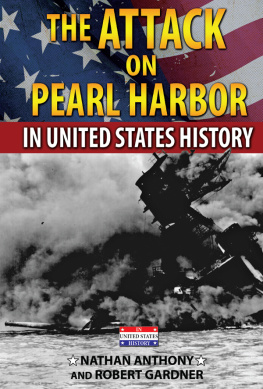
Copyright Larry Hancock 2015
All rights reserved under International and Pan-American Copyright Conventions. No part of this book may be used or reproduced in any manner whatsoever without written permission from the publisher, except in the case of brief quotations embodied in critical articles and reviews.
Library of Congress Cataloging-in-Publication Data is available
e-book ISBN 978-1-61902-657-5
Cover design by Charles Brock, Faceout Studio
Interior design by Tabitha Lahr
COUNTERPOINT
2560 Ninth Street, Suite 318
Berkeley, CA 94710
www.counterpointpress.com
Distributed by Publishers Group West
10 9 8 7 6 5 4 3 2 1

CONTENTS

Warning does not exist until it has been conveyed to the policymaker and he must know that he has been warned... policymakers must realize that warning cannot be issued with absolute certainty, even under the best of circumstances.... [N]o matter how brilliant the intelligence performance, the nation will have failed if no action is taken.
Cynthia Grabo, Anticipating Surprise: Analysis for Strategic Warning, 13-14


T here are always warnings!
In January 1941, Admiral Isoroku Yamamoto prepared and transmitted a paper titled Views on Preparations for War to the Japanese Minister of the Navy. Yamamotos paper addressed the likelihood that Japan would enter into war with America if the United States continued to oppose Japans efforts to expand its territorial influence in pursuit of desperately needed natural resources. Japan had based its effort at becoming a world power on militarization and industrialization. It had invaded and annexed Manchuria (Korea) in 1931 and begun an invasion of China in 1937. Years of military action had dramatically increased its demand for natural resources, in particular oil, iron and aviation gas. In response to the Japanese invasion of China, in 1938 American economic sanctions had embargoed shipments of war materials other than petroleum. When Japan invaded the Vietnam territories of French Indochina in 1940, the Roosevelt administration moved to embargo American sales of scrap iron and steelextending federal licensing and controls that had already been placed on sales of aviation fuel and high-grade scrap iron.
As of January 1941, Japan had been locked up in years of warfare and was becoming desperate for the natural resources to sustain its military effort as well as the overall growth of Japanese industry. American embargos were hurting the Japanese, but beyond that, the American Navy represented the only major obstacle to their seizure of the strategic fuel and mineral resources held by the European colonial regimes in Southeast Asia and Malaya. To enable such an effort and remove the American strategic threat, Yamamotos paper called for a surprise attack on the first day of the war, striking the American fleet at Pearl Harbor in Hawaii.
The strategic threat of Japanese surprise attacks conducted in conjunction with its further military moves south was not something the American military missed. In an almost simultaneous communication of January 1941, Chief of American Naval Operations Admiral Harold R. Stark expressed his concerns of such a Japanese action to the American Secretary of the Navy. In his message, Stark stated his opinion that [i]f war eventuates with Japan it is believed easily possible that hostilities would be eventuated by a surprise attack upon the fleet [the American Pacific Fleet] or the naval base at Pearl Harbor. Stark identified the most likely threats as being an air bombing attack and air torpedo attack. Secretary of the Navy Frank Knox concurred with Starks views and referred them to Major General Walter Short, the commander of the U.S. Armys Hawaiian Department.
Admiral Yamamotos proposal evolved into a detailed tactical plan of attack on the American Pacific Fleet and its port facilities at Pearl Harbor. It was based in his strategic assessment that a Japanese military move through the South China Sea against British and Dutch territories would immediately be threatened by a westward surge of the American fleetpast Midway Island and Guam and on through the Japanese-mandated islands in Micronesia to the Philippines. An early version of the U.S. War Plan Orange (war with Japan) had indeed called for just such a fleet surge, referred to as a Through Ticket to Manila, but that concept had been refined in 1934 to a more complex set of intermediate fleet movements.
At that time the plan for the American Asiatic Fleet was also changed from a defense of the Philippines to a retreat from the region at the onset of any Japanese attack. As of January 1941, Yamamotos strategic understanding of Americas war plan was outdatedbut that had little impact on his continued planning to significantly weaken Americas Pacific Fleet before it could move west. And his plan was not based on the
Threat observations and assessments such as Admiral Starks are a routine and ongoing outcome of strategic intelligence, the assessment of international political and military trends. Strategic warnings are critical to both international policy development and high-level military planning. Starks views were based on several discrete elements, including the Japanese incursions into Indochina in 1940. Japanese military success had forced the French into an accord allowing a major Japanese troop presence there, as well as granting transit rights for even larger forces. Stark was also persuaded of the threat by other factors, such as the firm stance by Japan that it absolutely had to have increased access to natural resources in Southeast Asia, the continuing diplomatic confrontation between Japan and the United States and a long history of American military exercises that had shown Pearl Harbor to be vulnerable to surprise air attack. In 1932, during a joint ArmyNavy exercise the commander of the attacking Navy force had raced his carriers to Hawaii, catching the Army defenders totally by surprise. His air attack, at dawn on February 7, had caught defending aircraft on the ground and established full air superiority, exposing the bases facilities to a devastating attack.
Ironically, Starks strategic assessment was almost immediately joined by a second warning, communicated in January 1941. Edward Crocker, the first secretary to the American embassy in Tokyo, sent a dispatch to the State Department. His warning was based on information from a diplomatic source in Tokyo. Crockers dispatch related that he had been informed by a Peruvian diplomatic colleague that in the event of trouble with the United States, Japan would attempt a surprise mass attack on Pearl Harbor. The Peruvian ambassador did not name his specific sources but stated that one of them was Japanese. After considerable inquiry, it was determined that the Peruvian diplomat was most likely passing on comments picked up by his secretary-translator. The ultimate source was unclear, and the timing may have been coincidental, but apparently a range of individuals were discussing and speculating on the possibility of such an attack.
Next page



